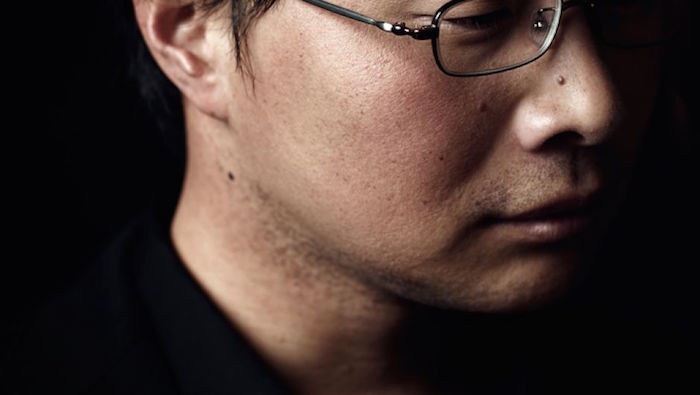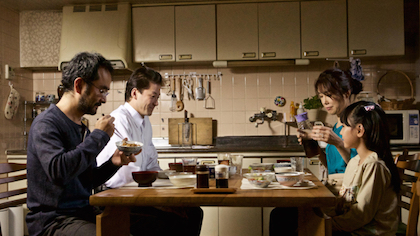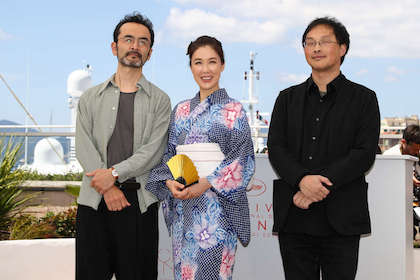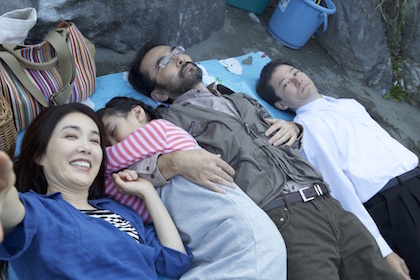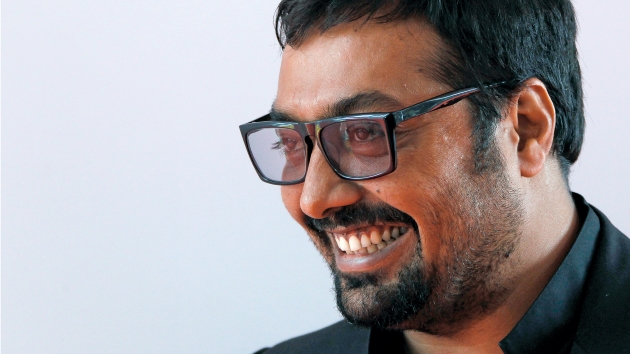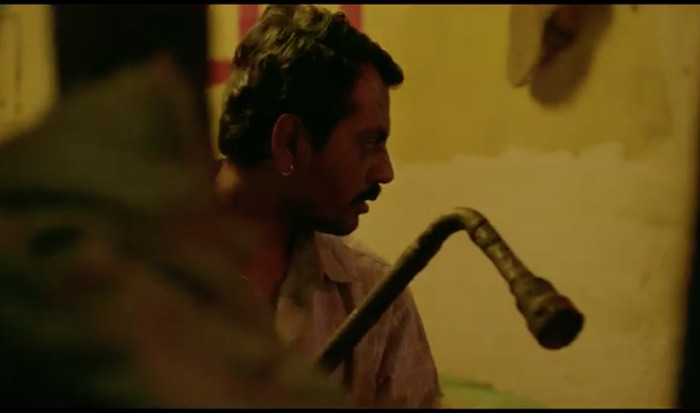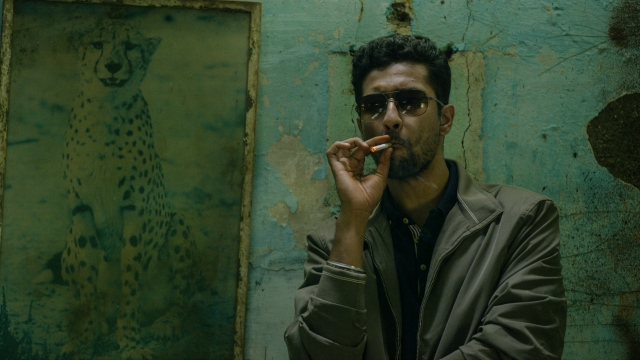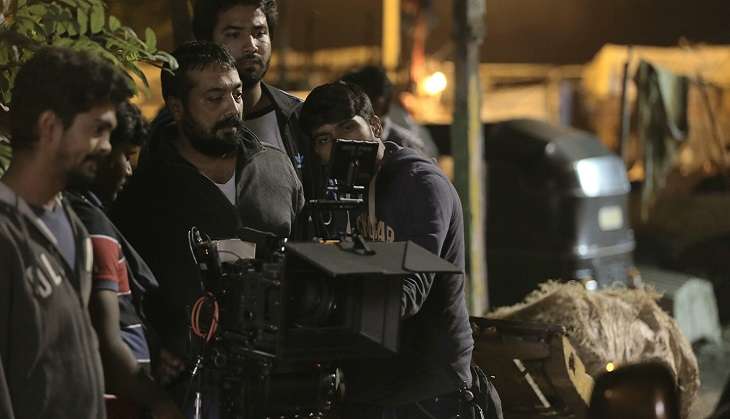DARING DIVERSITY IS TRUMP CARD IN 2016 MUFF SEASON
 Tuesday, September 6, 2016 at 4:48PM
Tuesday, September 6, 2016 at 4:48PM For 17 years, Melbourne Underground Film Festival (MUFF) festival director Richard Wolstencroft has programmed his event fearlessly, often counter to that which is considered socially acceptable; in 2010, he defied a government ban and had his home raided in the wake of a ‘protest screening’ of the gay undead shocker, LA Zombie. But in 2016, has he pushed too far? Does the ominously familiar festival tagline ‘Make The Australian Film Industry Great Again’ imply the unthinkable? Is MUFF and its headline-grabbing founder declaring an allegiance with (cue ‘Imperial March’) Donald Trump…?

At first, Wolstencroft (pictured, below) laughs off the suggestion. “The ‘Make the Australian Film Industry Great Again’ line is more about how the industry is just lousy now and not like the dynamic 70's and 80's,” he says. That may be so, but SCREEN-SPACE points out that four of the eleven narrative features playing this year – Marcus Koch’s 2007 clown-horror B-classic 100 Tears, Aussie alt sector icon Mark Savage’s Stressed to Kill, Paddy Jessop’s revenge-themed Shotgun and the closing night pic, Revenge of The Gweilo from Nathan Hill – all riff on the Trump-ish obsession with denial of white man privilege and patriarchy.
 “Sure, there's a bit of that,” he admits. “I'm a bit that way and I run MUFF. But (any) accusation that MUFF does not embrace diversity in filmmaking is wrong. Of the 80 films showing (this year), about a quarter are made by women. The mix of white directors and those of mixed ethnicity is about the same.” He notes that the festival was co-founded with a woman, Rebecca Sutherland; selection committees and staffing has always reflected Melbourne’s distinct social complexity; and, the event’s assistant director role has been filled by young men of Lebanese (Hussein Khoder, 2011-2015) and Indian (Roshan Jahal, 2016) heritage. Says Wolstencroft, “MUFF is a far more diverse festival than many ‘indie’ ones around, who may preach PC-ness but be made up of entirely white crews.”
“Sure, there's a bit of that,” he admits. “I'm a bit that way and I run MUFF. But (any) accusation that MUFF does not embrace diversity in filmmaking is wrong. Of the 80 films showing (this year), about a quarter are made by women. The mix of white directors and those of mixed ethnicity is about the same.” He notes that the festival was co-founded with a woman, Rebecca Sutherland; selection committees and staffing has always reflected Melbourne’s distinct social complexity; and, the event’s assistant director role has been filled by young men of Lebanese (Hussein Khoder, 2011-2015) and Indian (Roshan Jahal, 2016) heritage. Says Wolstencroft, “MUFF is a far more diverse festival than many ‘indie’ ones around, who may preach PC-ness but be made up of entirely white crews.”
There can be no denying the 17th annual MUFF line-up, which unspools September 9 at both the Alex Theatre and Backlot Studios in the southern capital, comprises a vastness of vision, with long- and short-form works from home and abroad across fiction and factual genres. Opening the feisty 9-day programme is the world premiere of The Perfect Nonsense, director Addison Heath’s off-kilter romantic odyssey starring Kristen Condon and Kenji Shimada. Other Australian auteurs under the MUFF banner in 2016 are Daniel Armstrong (SheBorg Massacre; trailered, below); Enzo Tedeschi (A Night of Horror Vol 1); Dee Choi (Mui Karaoke); Todwina J. Moore (Rock in a Hard Place); and, Rohan Thomas (The Other Option). Accompanying 100 Tears as part of a retro-themed sidebar presented by the cult film website Fakeshemp.net will be Alec Mill’s Blood Moon (1990), a late and under-appreciated entry from the Ozploitation era.
Also of that period is filmmaker Mark Savage, a kindred spirit of Wolstencroft’s and prominent underground identity in Melbourne, having directed such defining low-budget cult items as Marauders (1986), Sensitive New Age Killer (2000) and Defenceless: A Blood Symphony (2004). In programming Savage’s US-shot thriller Stressed to Kill, Wolstencroft has honoured a peer and friend of four decades standing. “I think Mark is one of the most important voices in Australia cinema of the last 35 years,” he says. “He made Super 8 films about violence, rape and the darkness of the human spirit; totally out of this world for Australia back then. (His films were) aggressive, exciting and completely contemporary and 30 years ahead of the game.”
 While staying determinedly committed to Australian talent, the short film program dubbed Mini MUFF and programmed by Seamus Ryan and Michael Taylor will screen works from six international territories including Canada, The U.S.A., The U.K. and France. From Spain comes the supernatural story of a ‘soul taker’ in Eva Doud’s El Lardon del Luz; Irish underground cinema is represented by Robert McKeon’s Wifey Redux (pictured, right). One of the highlights will be the opening night screening of A Thin Life, an Australian production from 1996 that was believed to be lost forever until Wolstencroft and director Frank Howson tracked down and reassembled the original negative; the session on September 9 will be the completed film’s first-ever screening.
While staying determinedly committed to Australian talent, the short film program dubbed Mini MUFF and programmed by Seamus Ryan and Michael Taylor will screen works from six international territories including Canada, The U.S.A., The U.K. and France. From Spain comes the supernatural story of a ‘soul taker’ in Eva Doud’s El Lardon del Luz; Irish underground cinema is represented by Robert McKeon’s Wifey Redux (pictured, right). One of the highlights will be the opening night screening of A Thin Life, an Australian production from 1996 that was believed to be lost forever until Wolstencroft and director Frank Howson tracked down and reassembled the original negative; the session on September 9 will be the completed film’s first-ever screening.
Despite a commitment to avoid labels (“I don’t really give a shit about definitions”), Wolstencroft does note that the underground scene has irrevocably changed since the term was coined. “Underground is the new word for ‘indie’,” he states. “Sundance films all star George Clooney and Brad Pitt and are not real ‘indie’ anymore. Underground film festivals play the real independent films.” In this years program notes, he concedes that only a select few festivals (SUFF, Revelations and Monster Fest) imbue the truly counter-culture filmmaking spirit in Australia. “At MUFF, we foster mostly low-budget to micro-budget genre cinema. We don’t look for production value; we look for ideas, spirit and an aggressive, self-promoting attitude. We look for something out of the ordinary. I have selected films for MUFF based on the personality and drive of the filmmaker alone.”
The 17th Melbourne Underground Film Festival runs September 9-17. For all ticketing and session details, visit the event’s official website.
 Cult Cinema,
Cult Cinema,  MUFF,
MUFF,  Melbourne,
Melbourne,  Underground Cinema
Underground Cinema 



